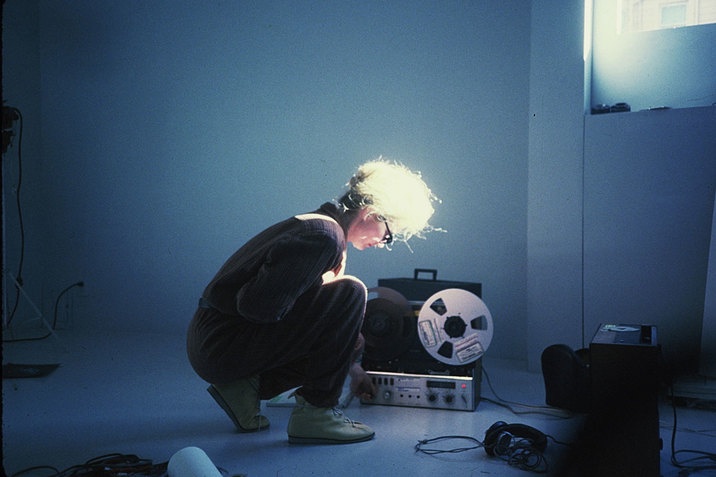
15 May Q’tine Feed: Curated by Suvani Suri (Week 4)
Weekly Round Up: 15th May 2020
With this week, we come to a close of the curated Q’tine Feed. We hope it helped expand on your perspectives of sound and move you to explore it further.
Until we meet again, here is a round up of the stories unto 15th May 2020:
11/05
Re-sounding the Home/ Yuri Suzuki’s exhibition Furniture Music
If we were to take a look at how design has evolved ‘sonically’, the first place that we could begin at is our homes, endowed with rich auditory information of the devices, products and appliances that they contain.
In the exhibition ‘Furniture Music’ (2018), Yuri Suzuki digs deeper into sounds embedded in our indoor environments and their affect on us while proposing a redesign of the domestic soundscape. The title of the show held in London comes from French composer Eric Satie’s description of his music as ‘a sound that should not be actively listened to, but present at the periphery of our daily lives’.
As technologies get quieter and ‘smarter’, the listening environments that they compose, change. Suzuki’s sonic interventions include a kettle that plays music through its spout when it’s boiling, a blender with subtle non-disruptive hums, a singing washing machine and a dining table with an acoustic chamber to amplify the sounds on its surface, generating an ever-evolving ambient scape.
Through ideas that transform the all-pervasive buzzing, whirring and humming of household artefacts, Suzuki not only triggers conversations around the experience of ‘sounds’ in products and interfaces but also speculates upon the future of design for the home, hinting at the sonic turn that it is bound to take.
–––––
12/05
The one who drew sound/ Daphne Oram
The field of experimental sound and graphics has a long and intertwined history. Key moments in drawn sound or graphical music owe their emergence to the work of those who were shaping sound to the developments in media and technologies of their time.
Daphne Oram, a British composer, is one of core influences to the creative expansion of electronic sound in post-war Europe. Starting off as a studio engineer at BBC in 1942, she later co-founded the BBC Radiophonic Workshop to explore new musical forms for the radio, eventually setting up an independent studio to continue her tape experiments, uninhibited by other demands.
The thought of a graphical music technique consumed Oram and she went on to create the Oramics machine – an antecedent to the sequencer. The iconic contraption contained slides that could be drawn on and read by an optical scanner to be then converted into layers of sound.
One of the seminal works penned by Oram, ‘Still Point’ was the first ever to blend acoustic orchestration with live electronic manipulation. It was rejected by the BBC and remained unheard for 70 years, until realised and performed by Shiva Feshareki and James Bulley alongside the London Contemporary Orchestra in 2016.
–––––
13/05
Across time and musics/ Tony Gatlif’s Latcho Drom
Music, as an individual and collective field of action, has not only been a subject to the influences of migration, but heavily intertwined with it, capturing accounts and histories of displacement that cannot merely be fitted into chapters or descriptions.
Tony Gatlif, an Algerian-born French filmmaker, in his early film ‘Latcho Drom’ (Romany for ‘Safe Journey’) paints one such stirring portrait of migration through the Romani Gypsies’ lives of wandering existence over the past 1000 years spanning across regions in the Asia, Africa and Europe of today.
In this stunning film that escapes all genres and barely contains spoken word, Gatlif, himself of Romani descent, traverses borders, landscapes, seasons, rhythms, languages, time scales, musical forms, styles and emotional registers while subtly weaving in the despairing political reality of exclusion and persecution. Though made in 1993, it’s message continues to resonate with the ongoing moment.
These lines by John Berger* seem to dive right into the heart of the journey that unfolds in the film-
“Music takes hold of the present, divides it up and builds a bridge with it, which leads to the life’s time. The listener and singer borrow the music’s intentionality and find in it a lost amalgam of past, present and future. Over the bridge, for as long as the music lasts, he passes backwards and forwards. When the music stops, the meaninglessness seeps back.”
You can watch the film here.
*lines from A Seventh Man by John Berger & Jean Mohr, published
—————–
14/05
Earside Out/ Maryanne Amacher and Jacob Kirkegaarde
Ever been boggled by sounds that seem to appear from within your ears-the occasional ringing, the pops, clicks or the whistles that come and go as they please? Rather dreaded by musicians and others alike, this sonic spectrum, audible only to the hearer, has been an intriguing space for some artists to deep dive into.
Maryanne Amacher (1938-2009), was an American composer who worked extensively with this class of psychoacoustic phenomena, also referred to as auditory distortion products. Terming them as ‘ear tones’, she produced a body of work exploring the rich inter-aural sound worlds that a listener creates, perceptually, in response to specific tones and melodic patterns.
A frequent collaborator of John Cage and Merce Cunningham, she thought rigorously about the way sound and architecture interacted. In her album ‘Sound Characters’, she imagines each piece as a sonic scene that unfolds as the audience enters into it. “The idea is to create an atmosphere that gives the drama of being inside a cinematic close-up, a form of “sonic theater” in which architecture magnifies the sensorial presence of experience. Rooms, walls, and corridors that sing…creating the detailed sound design is very much like scripting a sonic choreography. In some episodes sound sweeps through the rooms; in others, chords and tonalities are intricately joined between the rooms; in still others, a particular sound shape is emphasized to animate sonic imaging of a distant room. The rooms themselves become speakers producing sound which is felt throughout the body as well as heard.”, she explains.
A similar space of inquiry is shared by Jacob Kirkegaard–a contemporary artist, whose work ‘Eustachia for Voices’ is created from tones recorded and collected from the ears of the members of Danish choir Aarhus Pigekor (who also then end up performing it!).
About the composition, he says–
“This choral work connects two intimate organs of our body: the ear and the voice. The ears are the composers, the voices perform the tone.”
—————–
One of the key elements of the Performance Programs at GMI are the interdisciplinary studies. The course on Music & Arts Studies led by Suvani Suri is aimed at situating music within a larger framework of artistic intellect, creation and expression. Through weekly seminars and workshops, students are led to understand the historical, cultural, social and philosophical contexts for various kinds of music and art.



No Comments